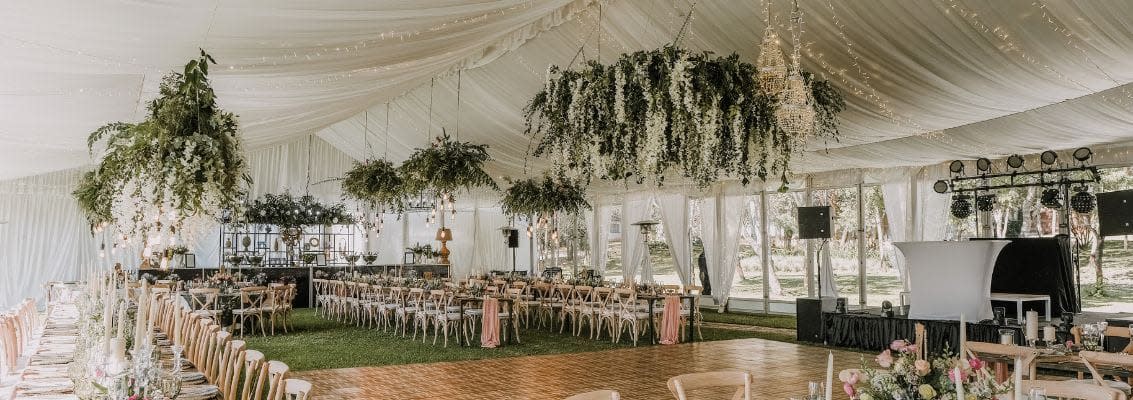The happy couple has gotten engaged, chosen a planner and a unique outdoor venue for their ideal wedding.
But has anyone checked the really, really long-range forecast for a date months or even years away?
Long- and short-range planning, from commissioning a meteorology report to having alternative plans and event insurance should be a consideration from Day 1 of planning. Here’s a look at some of the best advice from top wedding and event planning sites.
What to do Before Setting the Date
Consider using weather apps – or even weather professionals.
Weather apps can provide expected weather months ahead of time, or you could contact a local meteorologist for insight in picking the right day.
And there are more sophisticated options available. Ironic offers meteorology service for weddings and other events. The company says its long-range forecasting can help planners make informed decisions about events up to two years in advance, using 30 years of historical weather patterns and global climate trends.
Their concierge service for the event – starting at $3,500 – sets risk parameters, offers round the clock meteorologist support, daily weather reports and arranges meetings mid-week the week before the day to review the forecast and confirm rain or tent plans.
Vet the venue
Make sure the venue can accommodate last-minute changes due to weather. Is there a tent or indoor space available? Is there a backup generator in case power is lost? Are parking lots and walkways cleared in case of snow? Is there valet parking in case of rain? What about misters or fans if it’s hot? Space or propane heaters if it’s cold?
If it is a public space, find out if erecting a tent is allowed. If so, put a deposit on a tent. For a beach or lakeside wedding, consider renting a dance floor to avoid a muddy or sticky space.

After the Date is Set
Consider buying wedding insurance.
Major insurance companies like Progressive and Travelers offer wedding cancellation insurance. This coverage typically includes non-refundable expenses, such as deposits and may apply to venues, music, food, cake, flowers and more.
Give guests a clue about what the weather may be like.
Let guests know when (or even before) invitations are sent about how to dress – whether it’ll be hot or cold or if there could be rain or other inclement weather.
Adjust your menu to the weather.
If the reception is also outdoors, consider menu items that can withstand the heat or the cold. In case of rain, buffet dishes, the wedding cake and desserts under a tent or awning.
The Big Day Arrives and the Weather is Bad
Inform the guests.
First and foremost, let the guests know as early as possible that the event is still on and what arrangements are being made to deal with the weather.
Use your weather apps.
Weather apps like AccuWeather can give a minute-to-minute forecast at the exact location. Using the app might allow planners to make the call for not only weather gear but whether a slight delay might allow the weather to improve.
What to have on hand – whether it’s hot, cold, wet or windy.
In case of rain, umbrellas — preferably clear plastic to allow for unobstructed views – are ideal. Towels can be placed in restrooms for guests to use to dry off.
If it’s hot, provide shade. This could include umbrellas over tables, floppy hats, chic paper hand-held fans and hydration stations with water or lemonade.
If it’s cold, provide warmth. Consider a blanket box for guests to pick up blankets or pashminas and a hot cocoa station.
If it’s windy, check candles and flowers. Put candles in tall holders to keep them lit and ditch small vases and centerpieces that could blow away or over. Potted plants or centerpieces of fruits and vegetables could be a weighty idea.
If All Else Fails, Go with It
If you’ve done everything possible to prepare and it still rains on the big day, invite the guests to dance in the rain for a memorable experience.
Learn more about Destination Weddings by ALHI and subscribe to our newsletter.